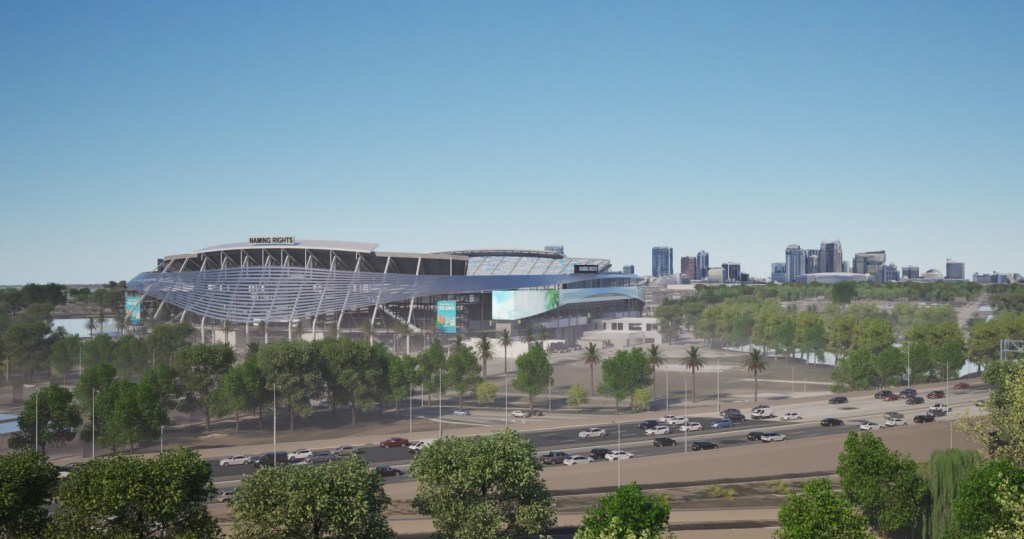The practical goal of renovating Orlando’s $400 million Camp World Stadium is to increase seating to 65,000, but the expansion gives the city the opportunity to release artistic statements downtown.
Ryan Freeland, lead architect for the DLR group, said he was inspired by the movement of water and palm leaves when he created the metallic skin surrounding the stadium. He told members of the city’s exterior review committee on Thursday that the skin modernizes the stadium and creates a “lampshade” effect on nights when color-changing LED lights.
“We’re looking at a series of ways to light up a building,” Freeland said.

The lighting package is programmable so you can change it based on city holidays, special events, or team colors.
The project will be funded through tourism development tax revenues generated by an additional 6% charge for hotel rooms and short-term rentals in Orange County. The city is also looking for a new naming rights partner to replace the camp world, whose contract expired in 2024.
The city released the first rendering of the new stadium on July 4th, and ARB provided a courtesy review of the preliminary design on Thursday.
Adam Meyerring of DLR Group said rebuilding the upper bowl and connecting the east and western edges of the stadium will add the required capacity and improve circulation within the stadium.
“That 65,000 seats are a key number to attract bowl games, NFL-type events,” he said. “That is the main reason for the project, and seating is important, and the current maximum capacity is around 63,000.

Other components of the modernization project include new premium suites and amenities, updated building systems, updates to code and life safety updates to current standards, and a retractable stage pocket in the South Seat Bowl section, attracting larger musical events.
ARB members mostly gave positive reviews, but also included specific questions about the streetscape, height clearance under the new metal support beam for the new upper deck, and metal skin material. One member was worried about the sunlight reflecting the eyes of the I-4 and SR 408 drivers.
Freeland said the team has not yet selected material or ending, but that will be provided when it returns to the final review. He said that although renderings have adopted “artistic freedom” to make the skin more reflective, the final version will have a more matte finish.
DLR Group and Ed Hurtig said the design team attended dozens of sporting events and concerts at the stadium, learning firsthand where the issues lie and knowing the best way to deal with them.
“We were only going through what you were saying, the fan experience you know,” he said. “We’re really trying to make it special with this renovation. So we touched on everything and understood the challenges they faced, and we realised that it’s really important… we’re changing this because of Orlando and the experience.”
Construction is expected to begin early 2026 from the forecast completion date in August 2027. This timeline allows for potential hosting of the Jacksonville Jaguars for the 2027-28 season.
Any tips on developing Central Florida? Please contact me at lkinsler@growthspotter.com or (407) 420-6261. Follow GrowthSpotter on Facebook and LinkedIn.

